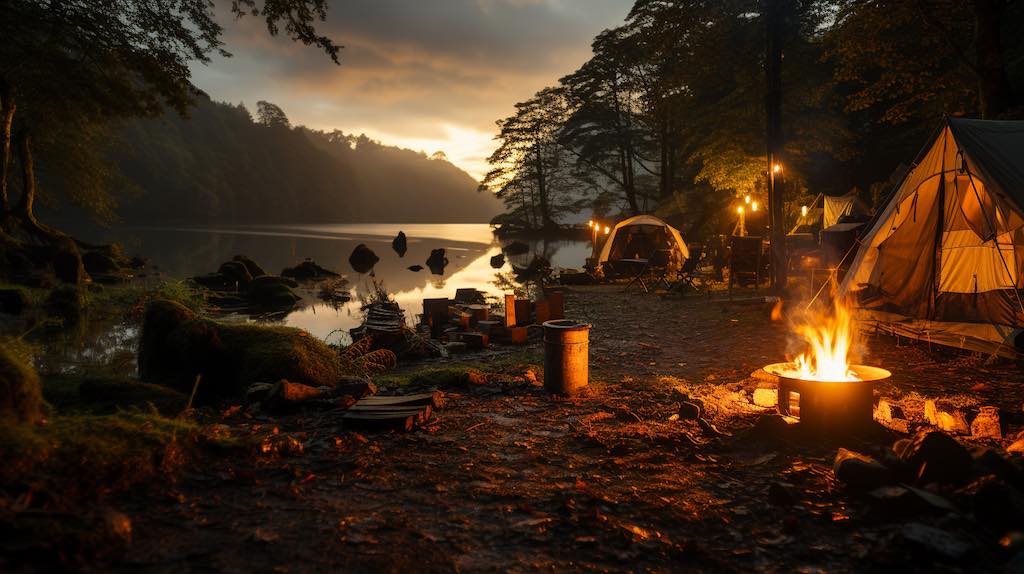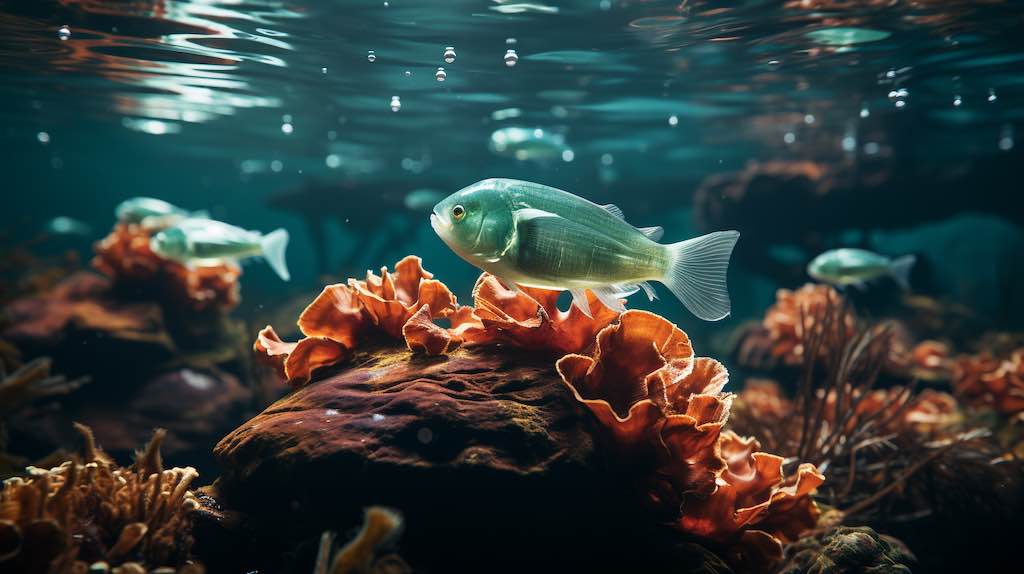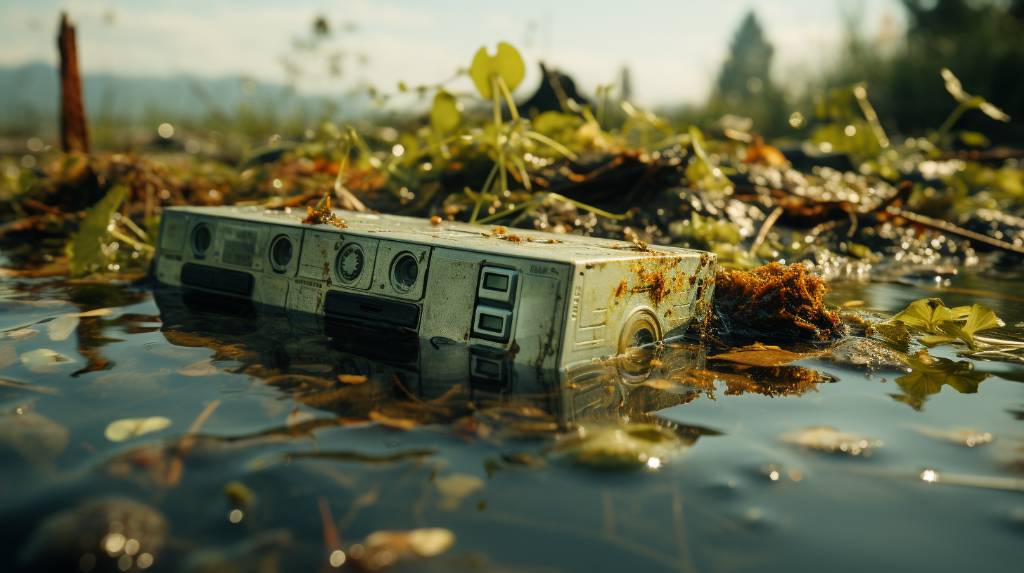Camping is a beloved outdoor activity that allows us to connect with nature and escape the hustle and bustle of everyday life. However, it’s important to remember that our actions in the great outdoors have an impact on the environment. By practicing eco-friendly camping techniques and following the principles of Leave No Trace, we can enjoy all that nature has to offer while minimally impacting the delicate ecosystems around us.
Understanding the Principles of Leave No Trace
Before we delve into the specifics of eco-friendly camping, it’s important to understand the principles of Leave No Trace. These principles serve as guidelines to help us minimize our impact on the environment and ensure that future generations can enjoy the same natural wonders we do.
The Seven Principles of Leave No Trace
The first principle is to plan ahead and prepare. This includes researching the area you’ll be camping in, knowing the regulations and guidelines, and making sure you have the appropriate gear for a low-impact trip.
When planning your camping trip, it’s essential to consider factors such as weather conditions, terrain, and potential hazards. By being well-prepared, you can ensure a safe and enjoyable experience while minimizing your impact on the environment.
The second principle is to travel and camp on durable surfaces. By sticking to established trails and campsites, we can avoid damaging sensitive vegetation and soil.
When hiking or setting up camp, it’s important to stay on designated paths and avoid trampling on fragile plants or disturbing wildlife habitats. By respecting the natural environment, we can preserve its beauty for years to come.
The third principle is to dispose of waste properly. This includes packing out all trash, human waste, and any other items that could harm the environment.
Proper waste disposal is crucial in maintaining the cleanliness and integrity of our camping areas. By carrying out everything we bring in, we leave no trace of our presence and prevent pollution of the environment.
The fourth principle is to leave what you find. By refraining from collecting rocks, plants, or other natural objects, we can help preserve the integrity of the natural landscape.
While it may be tempting to take home a souvenir from your camping trip, it is important to remember that these natural objects play a vital role in the ecosystem. By leaving them untouched, we contribute to the preservation of biodiversity and the overall health of the environment.
The fifth principle is to minimize campfire impacts. If campfires are allowed, it’s important to use established fire rings, keep fires small, and always fully extinguish them before leaving.
Campfires can provide warmth, light, and a sense of community during camping trips. However, it’s crucial to use them responsibly. By following fire regulations, we can prevent wildfires and minimize the impact on the surrounding vegetation and wildlife.
The sixth principle is to respect wildlife. This means observing animals from a distance, not feeding them, and properly storing food to prevent conflicts with wildlife.
Encountering wildlife while camping can be an exciting experience, but it’s important to remember that we are guests in their natural habitat. By keeping a safe distance, we allow animals to behave naturally and avoid disrupting their natural behaviors.
The seventh principle is to be considerate of other visitors. By being mindful of noise levels and respecting the privacy and experience of others, we can create a harmonious camping environment.
Camping is a shared experience, and it’s important to be considerate of other campers. By keeping noise levels down, following campground rules, and respecting the solitude of others, we can ensure a positive and enjoyable experience for everyone.
Why is Leave No Trace Important?
Leave No Trace is important because it helps protect fragile ecosystems and preserves the natural beauty of our camping destinations. By following these principles, we can minimize our impact on the environment and ensure that future generations can enjoy the same pristine landscapes we do.
When we practice Leave No Trace principles, we contribute to the long-term sustainability of our natural resources. We reduce pollution, preserve wildlife habitats, and maintain the integrity of ecosystems. By doing so, we create a healthier and more balanced environment for both present and future generations to enjoy.
Preparing for an Eco-Friendly Camping Trip
Now that we understand the principles of Leave No Trace, let’s dive into how we can prepare for an eco-friendly camping trip.
Camping is a wonderful way to connect with nature and enjoy the great outdoors. However, it’s important to remember that our actions can have an impact on the environment. By adopting eco-friendly practices, we can minimize our footprint and ensure that future generations can also enjoy the beauty of nature.
Choosing the Right Gear
When it comes to eco-friendly camping, choosing the right gear is essential. Opt for gear made from sustainable materials, such as tents made from recycled materials or eco-friendly sleeping bags. Not only are these options better for the environment, but they are also often more durable and long-lasting.
Additionally, consider investing in gear that is built to last, reducing the need for frequent replacements and ultimately reducing waste. Look for gear that is designed with sustainability in mind, such as backpacks made from recycled materials or cooking utensils made from renewable resources.
By packing light and bringing only what you need, you’ll minimize your impact on the environment and make your camping experience more enjoyable. Consider multi-purpose items that can serve multiple functions, reducing the need for excessive gear.
Planning Your Meals
Planning your meals ahead of time is not only a great way to save time and effort while camping but also an opportunity to minimize waste. Opt for reusable food containers and avoid single-use plastic. Bring non-perishable foods that won’t spoil easily, reducing the amount of food waste generated during your trip.
Consider incorporating locally sourced and organic ingredients into your camping meals to support sustainable agriculture practices. Not only will this provide you with fresh and nutritious meals, but it will also reduce the carbon footprint associated with transporting food long distances.
Furthermore, consider packing meals that require minimal cooking and use energy-efficient cooking methods. This will help conserve fuel and reduce the amount of waste generated from disposable cooking supplies.
Remember to pack biodegradable soap and cleaning supplies to ensure that you leave no trace when washing your dishes and utensils. Avoid using harsh chemicals that can harm the environment and opt for eco-friendly alternatives.
Leave No Trace Principles
While preparing for an eco-friendly camping trip involves many aspects, it’s crucial to remember and practice the Leave No Trace principles. These principles include:
- Plan ahead and prepare
- Travel and camp on durable surfaces
- Dispose of waste properly
- Leave what you find
- Minimize campfire impacts
- Respect wildlife
- Be considerate of other visitors
By following these principles, we can ensure that we have a minimal impact on the environment and preserve the natural beauty of our camping destinations for future generations.
Setting Up Your Eco-Friendly Campsite
Now that you’re ready to set up your campsite, let’s explore how you can do so in an eco-friendly manner.
When setting up an eco-friendly campsite, there are several factors to consider in order to minimize your impact on the environment and preserve the natural beauty of the area.
Selecting the Right Spot
When choosing a campsite, select an established campsite whenever possible. This not only helps protect vulnerable vegetation but also prevents the creation of unnecessary trails and makeshift campsites. By utilizing existing campsites, you contribute to the preservation of the natural landscape.
Moreover, it is important to avoid setting up camp near bodies of water or in areas where wildlife could be disturbed. By being mindful of your surroundings, you can minimize your impact on the local ecosystem and allow wildlife to thrive undisturbed.
Minimizing Impact on the Environment
Once you’ve chosen your campsite, take steps to minimize your impact on the environment. By adopting eco-friendly practices, you can ensure that your camping experience is not only enjoyable but also sustainable.
One way to minimize your impact is by using existing fire rings, if available, and keeping fires small. This reduces the amount of wood you’ll need to burn, conserving natural resources and minimizing air pollution. Additionally, always remember to fully extinguish the fire before leaving the campsite to prevent any accidental wildfires.
Another important aspect of eco-friendly camping is proper waste management. Ensure that all trash and food waste is properly disposed of and securely stored overnight to avoid attracting wildlife. This not only keeps the campsite clean and pleasant but also protects wildlife from consuming harmful substances.
Furthermore, it is essential to minimize your use of soap by opting for biodegradable options. This ensures that the soapy water does not harm the surrounding environment. When washing dishes and yourself, make sure to do so at least 200 feet away from any bodies of water to prevent contamination.
By following these eco-friendly camping practices, you can enjoy the great outdoors while minimizing your impact on the environment. Remember, leaving no trace is not just a principle but a responsibility we all share in preserving the beauty of nature for future generations.
Practicing Sustainable Camping Habits
Being eco-friendly extends beyond the initial set up of your campsite. It’s important to practice sustainable camping habits throughout your trip.
When it comes to managing waste properly, there are a few key principles to keep in mind. First and foremost, always pack out everything you brought with you, including any trash and food waste. Leaving behind any kind of waste not only pollutes the environment but can also harm wildlife.
But it’s not just about packing out your own waste. It’s also important to leave the campsite cleaner than you found it. This means picking up any litter you may come across, even if it’s not yours. By doing so, you’re not only improving the aesthetics of the area but also helping to preserve the natural beauty for future campers to enjoy.
If you’re camping in an area without restroom facilities, it’s crucial to properly dispose of human waste. The cathole method is a widely accepted practice for this purpose. It involves digging a hole at least 6-8 inches deep and 200 feet away from any water sources or campsites. After using the cathole, make sure to cover it completely with soil. This helps to prevent contamination of water sources and minimizes the impact on the ecosystem.
Respecting wildlife and nature is another important aspect of sustainable camping. While it can be exciting to encounter wildlife during your trip, it’s essential to observe them from a distance. Getting too close or trying to interact with them can disrupt their natural behavior and cause stress.
Feeding wildlife or leaving food scraps behind is also discouraged. This can create dependency on human food, disrupt their natural diet, and even lead to aggressive behavior. Remember, these animals have their own sources of food, and it’s best to let them forage for it naturally.
It’s also crucial to be aware of any local regulations regarding interactions with wildlife. Some areas may have specific guidelines in place to protect certain species or habitats. For example, you may be required to keep a certain distance from nesting sites or avoid approaching baby animals. These regulations are in place to ensure the well-being of the wildlife and maintain the balance of the ecosystem.
As campers, we are visitors in the home of these animals and the natural environment. It’s our responsibility to treat them with respect and minimize our impact on their habitat. By practicing sustainable camping habits, we can enjoy the beauty of nature while preserving it for future generations.
Leaving the Campsite Better Than You Found It
As the old saying goes, leave only footprints, take only memories. When it’s time to break camp and head home, take the opportunity to leave the campsite better than you found it.
Cleaning Up Your Campsite
Before leaving, thoroughly clean your campsite. Ensure that all trash and food waste is gathered and properly disposed of, leaving no trace behind.
But why stop at just picking up your own trash? Take a few extra minutes to scan the area around your campsite for any litter that may have been left behind by previous campers. By doing so, you not only leave the campsite better than you found it, but you also contribute to the overall cleanliness and beauty of the natural environment for the next visitors.
Remove any belongings or gear you brought with you, ensuring that nothing is left behind that could harm the environment or wildlife. This includes checking for small items such as bottle caps or cigarette butts that may have accidentally fallen out of your pockets or bags.
Restoring the Natural Environment
If you notice any damage or disturbances in the natural environment during your stay, take the time to restore it as best you can. For example, if you moved rocks or logs to set up your tent, return them to their original positions.
Additionally, be mindful of any trails you may have created while exploring the area. If you notice that you have inadvertently veered off the designated trail, take a moment to gently brush away any footprints or signs of disturbance, allowing nature to once again reclaim its pristine state.
Also, be conscious of any fire pits you may have used and properly extinguish them. Scatter the cooled ash and naturalize the area as much as possible. By doing so, you not only prevent potential wildfires but also ensure that the campsite remains in its natural state for future campers to enjoy.
Lastly, take a moment to observe the surrounding flora and fauna. If you notice any plants that have been trampled or damaged, try to gently restore them to an upright position, allowing them to continue their growth undisturbed.
Remember, leaving the campsite better than you found it is not just a responsibility, but also an opportunity to show respect and appreciation for the natural world. By taking these extra steps, you contribute to the preservation of our beautiful outdoor spaces for generations to come.Inspiring Others to Camp Responsibly
As eco-friendly campers, we have the opportunity to lead by example and inspire others to join us in leaving no trace behind.
Sharing Your Knowledge
Share your eco-friendly camping knowledge with others. Educate your friends, family, and fellow campers about the principles of Leave No Trace and the importance of minimizing our impact on the environment.
Offer tips and advice on sustainable camping practices, and encourage others to make conscious choices when enjoying the great outdoors.
Leading by Example
Set the standard for responsible camping by leading by example. Practice what you preach and ensure that your own camping trips adhere to the principles of Leave No Trace.
Show others how small changes can make a big impact and inspire them to follow suit.
Eco-Friendly Camping: A Responsible Adventure
Eco-friendly camping allows us to enjoy the beauty of nature while leaving minimal impact on the environment. By following the principles of Leave No Trace, we can ensure that our camping trips are not only enjoyable but also sustainable for future generations to experience.
So next time you pitch your tent under the starry sky, remember to choose durable surfaces, manage your waste properly, respect wildlife, and leave the campsite better than you found it. Together, let’s embrace the beauty of the great outdoors while preserving it for generations to come.








































